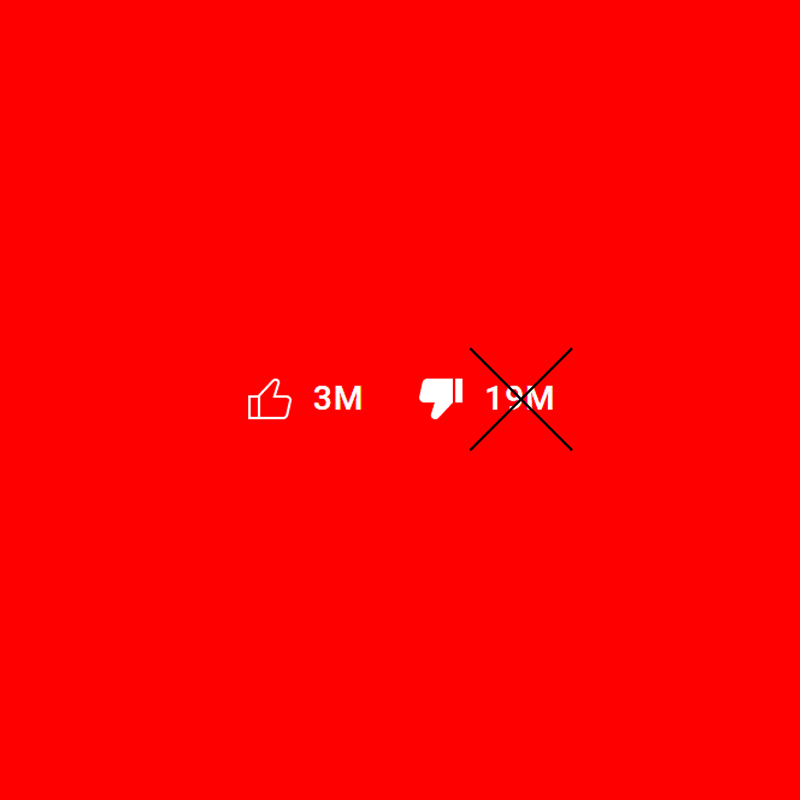
The currency of practically all social media networks is engagement.
Engagements here include view counts, as well as comments, and likes. On YouTube, it includes the thumbs up and the thumbs down button. When a thumbs up should make content creators happy, thumbs down tend to do the exact opposite.
And for that reason, people are abusing that feature for the worse.
On YouTube, the thumbs up for Like and thumbs down for a Dislike have been at the bottom of videos for more than many years. But since people are harassing others through what's called a dislike attack campaign, YouTube thinks that it's wise to just hide the thumbs down counter.
In a blog post, the company said that an experiment that hid the dislike numbers on certain videos revealed that the videos experienced reduced frequency of dislike attacks, and could actually prevent specific videos from being targeted.
This benefits more on smaller channels, where dislike attack campaign can occur at a higher rate, and can be more damaging.
While YouTube is removing the counter, YouTube isn't removing the feature at all.
"Rolling out gradually" to all users, YouTube said that the precise dislike counts can be made private and visible only to the creator of the video.
YouTube content creators can see details of this on the creator's dashboard under the engagement tab.

In other words, the dislike button is still there, but rather than being vulnerable for abuse for public shaming, YouTube is making it a method for viewers to give creators a private feedback.
According to YouTube creator liaison Matt Koval, while Likes and Dislikes were originally seen as a simple way for viewers to mark if a video was good or not, some users are turning the dislike counter into a sort of game.
Sometimes, the dislike attack campaign is part of a coordinated attack, simply because a user might not like the creator of the video.
While Koval said that research done by YouTube found that the number of dislikes on video on average didn’t have a noticeable impact on overall viewership, the increasing number of dislikes can cause make creators to stress out, or even experience anxiety.
What's more, viewers who are used to see the Like and Dislike counter often use the ratio to decide whether to continue watching or not.
Koval joked that some YouTube users may think that the change was partly made to hide YouTube’s embarrassment about the 2018 YouTube Rewind, which is considered among the most disliked videos on YouTube.
Koval however said that the update is really just aimed at protecting content creators of all types across YouTube.
By hiding dislikes, YouTube aims to promote “respectful interactions between viewers and creators.”
“We are proactively making this change because YouTube has a responsibility to protect creators, especially smaller creators, from harassment and dislike attacks,” a spokesperson said.
YouTube isn't the only platform doing this. In the past, others have started giving users the option to hide rating metrics as well.
However, this kind of approach is not known as the perfect solution.
This is because the numbers that are hidden from public view are still there. Creators of videos can still see the number of dislikes they have on their dashboard, and this can still create stress.
What's more, there is no guarantee that the approach can benefit every single user on the platform.
YouTube in announcing the removal of the dislike count came as the public is questioning how huge the influence of tech companies have over the mental health of their users, particularly when it comes to minors.
YouTube as the largest streaming platform on Earth, is Google's property, which in turn, is Alphabet's, the largest American multinational technology conglomerate holding company.
The company has been targeted by many regulators and government agencies due to its monopolistic behavior and massive influence.
The move also came as YouTube is facing an increasingly tough competition in the business against TikTok and some others.